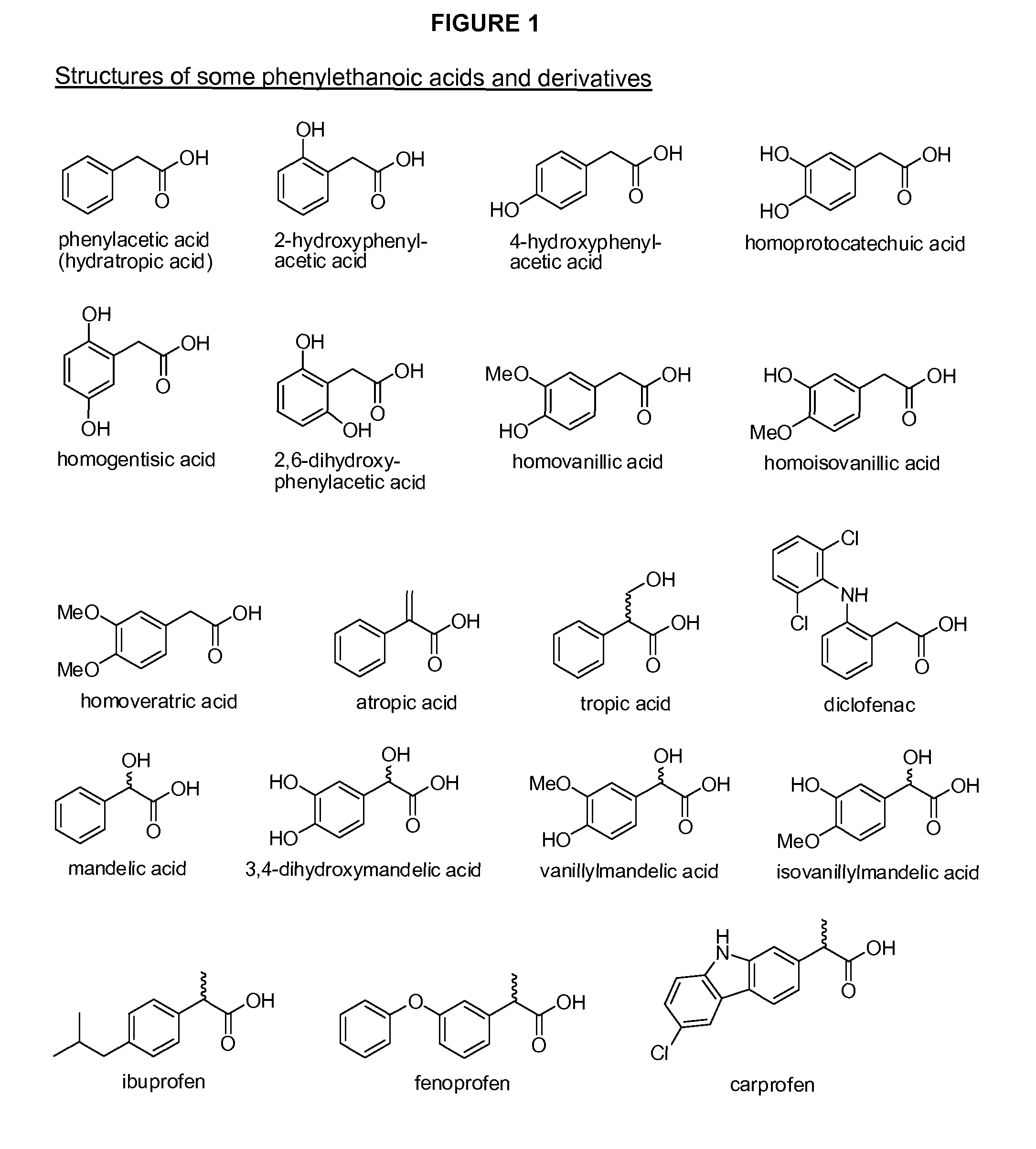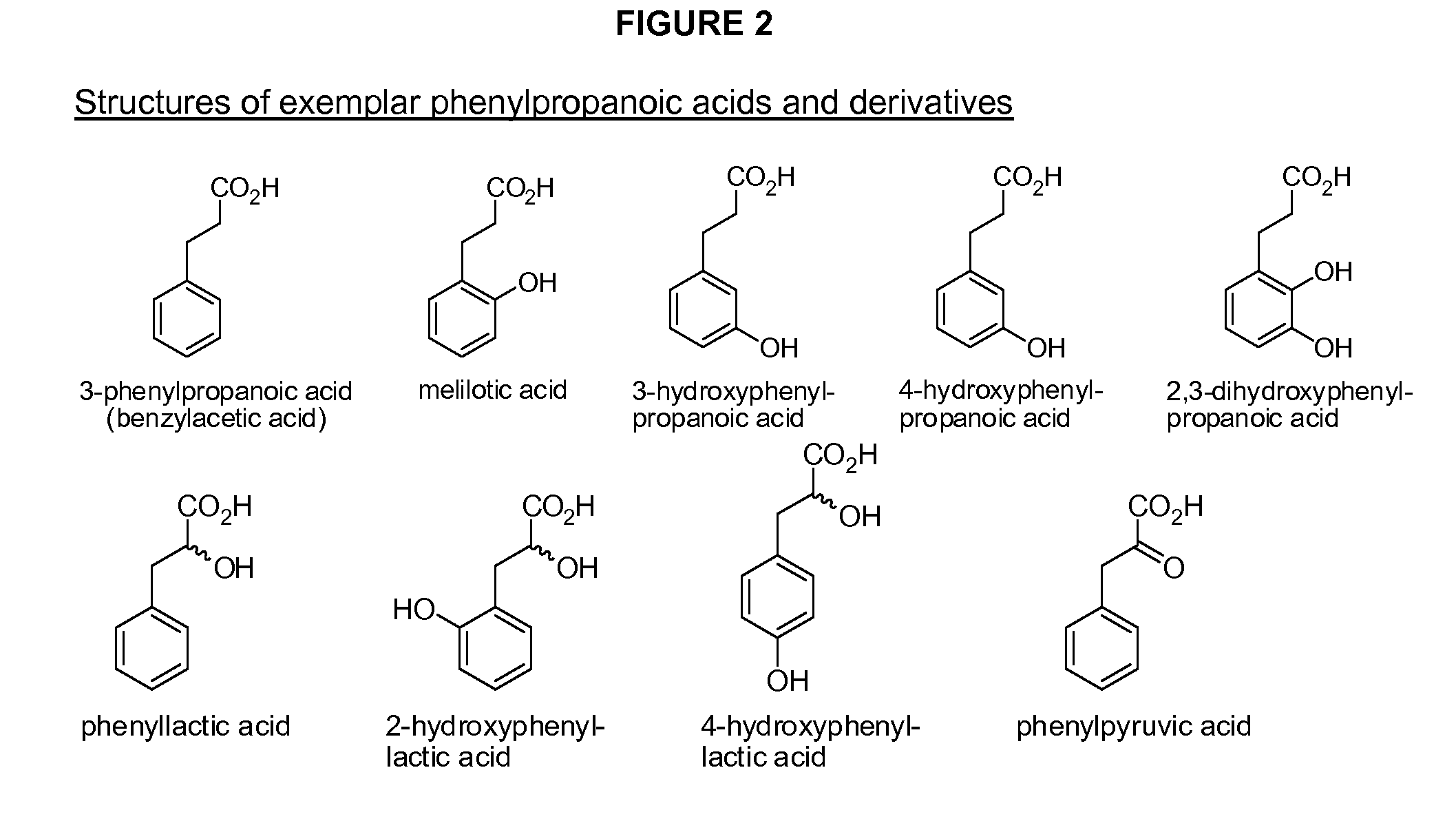Phenylethanoic acid, phenylpropanoic acid and phenylpropenoic acid conjugates and prodrugs of hydrocodone, method of making and use thereof
a technology which is applied in the field of phenylpropanoic acid and phenylpropenoic acid conjugates and prodrugs of hydrocodone, which can solve the problems of high addictiveness, unresolved problems, and abused with far reaching social and health related consequences, so as to reduce the potential for overdose or abuse
- Summary
- Abstract
- Description
- Claims
- Application Information
AI Technical Summary
Benefits of technology
Problems solved by technology
Method used
Image
Examples
example 1
Chemical Stability of Conjugates of Hydrocodone
[0137]Exemplary conjugates of hydrocodone of the present technology and control test conjugates not of the present technology (Adipate-HC or Tyr-Tyr-Phe-Phe-Ile-hydrocodone [YYFFI-HC]) were tested for chemical stability under conditions similar to what a potential drug abused may use to “extract” the active portion of the molecule, for example dissolved in hydrochloric acid or sodium bicarbonate either at ambient temperature or at 100° C.
[0138]Samples of conjugates of hydrocodone of the present technology were tested and compared with samples of other conjugates not of the present technology for their hydrolysis to hydrocodone after dilution in 1 N hydrochloric acid (HCl) for 1 hour at ambient temperature (˜20° C.) or in an oil bath at 100° C. The percentages indicate how much of the initial amount of conjugate was hydrolyzed under these conditions. The results are shown in Table 1.
[0139]
TABLE 11 N HClCompoundambient100° C.Naproxen-HC 0...
example 2
Oral PK Profiles of Conjugated Hydrocodone of the Present Technology
[0142]The PK profiles for hydrocodone or hydromorphone released from the prodrugs of the present technology can be selected to control and modulate release to resemble various desirable curve shapes (depending on application) while maintaining beneficial chemical, intranasal and intravenous abuse resistance.
[0143]Comparison was performed for Ibu-HC, an exemplary prodrug of the current technology with Diglycolate-HC, a conjugate not within the scope of the present technology. Rats were orally administered the equivalent of 2 mg / kg of hydrocodone freebase of the conjugate and the plasma concentrations of released hydrocodone and of the active metabolite hydromorphone were measured over time by LC-MS / MS. Hydrocodone plasma concentrations produced by Ibu-HC were higher during the initial 1-2 hours than hydrocodone concentrations generated by Diglycolate-HC (AUC and Cmax for Ibu-HC were approximately 30% and 60% higher, ...
example 3
Exemplary Intranasal PK Profiles of Hydrocodone Conjugates of the Present Technology
[0144]By selecting suitable phenylethanoic, phenylpropanoic or phenylpropenoic acid analogs the resulting hydrocodone prodrugs are not hydrolyzed efficiently when administered via routes other than oral. Prodrugs of the present technology with appropriately elected ligands can produce hydrocodone and hydromorphone plasma concentrations that are significantly lower than respective plasma concentration for unbound Hydrocodone•BT or for other prodrug classes when administered intranasally.
[0145]Ibu-HC and Adipate-HC were administered to rats intranasally at doses equivalent to 2 mg / kg of freebase hydrocodone and the plasma concentrations of released hydrocodone and of the active metabolite hydromorphone were measured by LC-MS / MS over time. Ibu-HC exhibited better abuse protection than Adipate-HC since hydrocodone plasma concentrations were significantly lower for Ibu-HC (FIG. 7; AUC and Cmax for Adipate...
PUM
 Login to View More
Login to View More Abstract
Description
Claims
Application Information
 Login to View More
Login to View More - R&D
- Intellectual Property
- Life Sciences
- Materials
- Tech Scout
- Unparalleled Data Quality
- Higher Quality Content
- 60% Fewer Hallucinations
Browse by: Latest US Patents, China's latest patents, Technical Efficacy Thesaurus, Application Domain, Technology Topic, Popular Technical Reports.
© 2025 PatSnap. All rights reserved.Legal|Privacy policy|Modern Slavery Act Transparency Statement|Sitemap|About US| Contact US: help@patsnap.com



